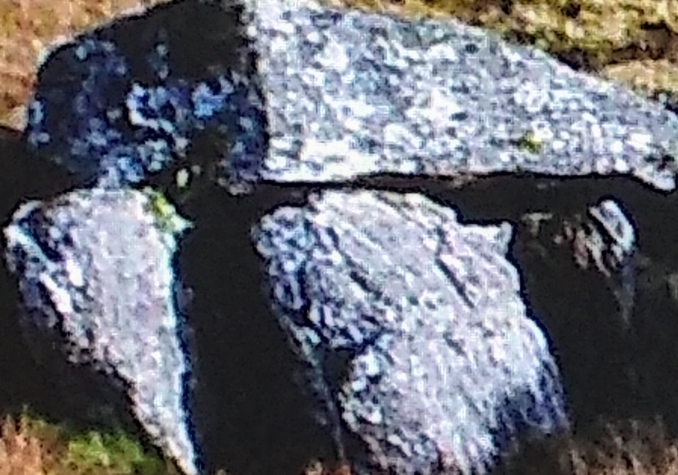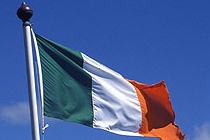Ballyvennaght Portal Tombs

Ballyvennaght has two portal-tombs which are approximately 20 metres apart and possibly dating to about 4000- 3000 BC. The site is located to the east of the A2 and off the coastal road about two km north of the village of Cushendun, County Antrim, north of Ireland (Irish: Cois Abhann Doinne, Contae Aontroma, Tuaisceart Éireann). The westernmost tomb has a large capstone about 3 metres across. The portal stones are about 1.5 metres high. The other tomb has collapsed under the weight of its capstone. The remains of a cairn which formed part of the burial monument for both can be seen.
The style of construction of Portal Tombs (Dolmens) are very distinctive. They have large capstones elevated at an angle and held up by huge standing stones. The are estimated to date from about 4000- 3000 BC. Radiocarbon dating from remains found at Poulnabrone Portal Tomb in the Burran, County Clare, indicate that the burials were deposited at regular intervals over a period of 600 years between 3800 and 3200 BC.
The nearest village to the Ballyvennaght tombs, Cushendun (Irish: Cois Abhann Doinne) is a designated conservation area and is noted for its picturesque coastal setting. It is off the A2 coast road between Cushendall (Irish: Cois Abhann Dalla) and Ballycastle (Irish: Baile an Chaistil). The village is within the Antrim Coast and Glens Area of Outstanding Natural Beauty. There is a long history of human activity in the areas covered which has many important archaeological sites, listed buildings, historic monuments and conservation areas.
Celtic nation:
- Ireland
Itinerary:
- Ireland Ulster northeast
Place type:
- Ancient site





